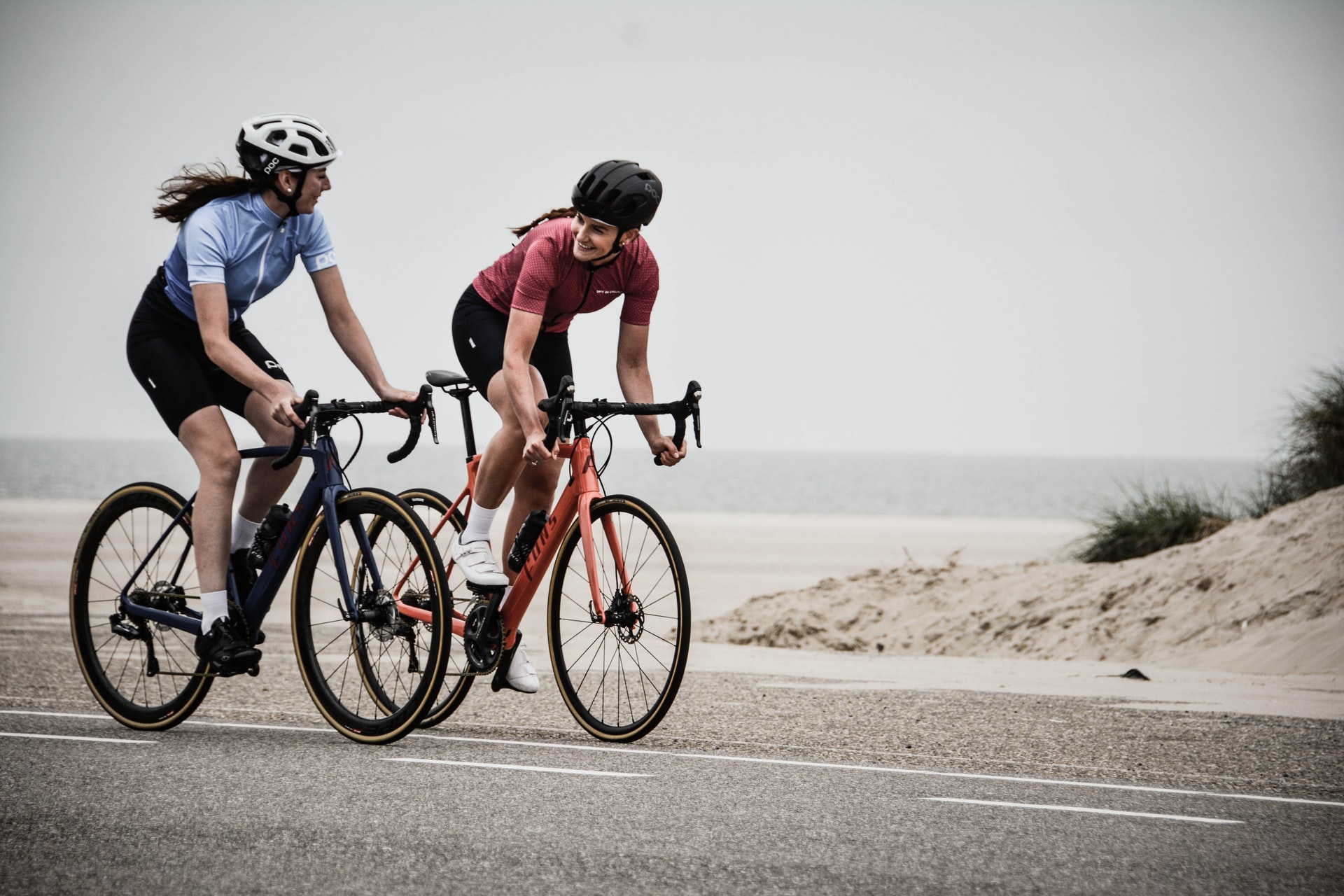While looking around for a helmet, you might’ve noticed some labeled, “women’s.” This specification doesn’t necessarily mean that men can’t wear it either. This leads us to the main question, what’s the difference between men’s and women’s bicycle helmets?
Even though bicycle helmets are sometimes marketed to men and women specifically, they’re essentially unisex. The main differences may come from size or color. Otherwise, a woman can wear a men’s helmet and vice versa.
That being said, some women’s bicycle helmets might offer certain extras such as a ponytail hole.
Stick around if you’re interested in knowing more about the differences between men’s and women’s bicycle helmets.
Men’s vs. Women’s Bicycle Helmets
Providing men’s and women’s bicycle helmets might seem like a marketing scheme to cater to more buyers. Truth is, there are some differences worth considering and others that are used to attract shoppers. Let’s look at some of them below.
Sizing
One of the first factors on your mind is probably size. Naturally, women have smaller-shaped heads. This is why most women’s bicycle helmet brands offer several size variations (XS, S, M, L, XL).
Meanwhile, men’s heads are not only relatively larger but more elongated. When it comes to the forehead area, women have longer foreheads while men’s foreheads are typically receding.
Head bone mass also affects a bicycle helmet fit. Since men have more bone mass than women, they’re more likely to require larger helmets.
Having said that, everyone has varied head sizes. Some women have larger heads than men and the opposite applies.
Women might even need larger helmets to accommodate their voluminous hair. On the other hand, bald men might find a snug fit in the women’s bicycle helmet section.
Pattern and Style
Another factor worth considering is the bicycle helmet’s design. A plethora of businesses offer men’s and women’s products to mainly draw in more customers. A women’s razor might seem more appealing to a woman than a man.
These categories are mainly differentiated by design. Pink is usually marketed towards women, while men are more drawn to darker and masculine colors.
Now, bicycle helmets come in all sorts of designs and patterns that can appeal to just about anyone. Women’s bicycle helmets might come adorned with colorful patterns and pink or purple graphics.
Men’s bicycle helmets are usually offered in black or other dark colors. Nevertheless, this isn’t true for a lot of brands. In most cases, you’ll likely find black women’s helmets and bright-colored men’s helmets.
Ponytail Feature
It might be uncomfortable for women to keep all their hair stuffed in their bicycle helmets for a while. That’s why some women’s bicycle helmets offer a ponytail compartment that’s located right above the size adjuster.
Men can also use ponytail-friendly bicycle helmets, especially if their hair is particularly long. At the end of the day, we could all use the extra feature to keep our hair out.
Are Bicycle Helmets Unisex?
You can buy any bicycle helmet, regardless of its gender specification, as long as it fits. Would that mean that bicycle helmets are unisex? Yes, it does.
The most crucial factor you need to look for when buying a bicycle helmet is its size. The main purpose of a helmet is to protect your head. After finding the right size; comfort, color, and design come after.
How to Find a Right Sized Bicycle Helmet
Whether you’re looking for a men’s or women’s bicycle helmet, you’ll want to get your head size right for optimum safety. Here’s how you can do that.
Step #1: Estimate Your Head Size
The first thing you want to do is grab the measuring tape. Next, enclose it around your head. Make sure to measure the circumference that is approximately one inch over your ears and eyebrows.
Step #2: Consider the Interior
If you’re unable to find the exact size fit for a bicycle helmet, you can always try to find adjustable ones. They usually include either a ratcheting system or removable pads.
The latter might give you more comfort and a snugger fit, but it might deteriorate from your sweat. A ratcheting system might provide you with a better option since it uses a crank or dial to slightly change the sizing.
Step #3: Put it On
After finding the correct size and fit, it’s time to try it on. How does it feel? If there’s some pressure around the head, then it might be a sign that it’s too small. If it feels like there’s a lot of room between your head and the helmet, then it might be too loose.
Initially, you can first adjust the fit through the ratcheting system or add or remove the removable pads.
A good rule of thumb for determining whether a bicycle helmet is fitting correctly is to look up. If the front area of the helmet is visible, then it’s too low.
Afterward, you’ll want to buckle the chin straps. Tighten the chin straps to your liking. For the best chin strap fit, you should be able to notice the helmet coming down as you open your mouth.
Step #4: Test It
For additional safety measures, you can perform a shake test to ensure a good bicycle helmet fit.
As the name suggests, the shake test involves shaking your head forward, backward, and side to side. If you feel the helmet moving more than an inch, then you should consider a tighter fit.
To Conclude
What’s the difference between men’s and women’s bicycle helmets? Well, it could boil down to size, design, and features. That being so, women can still use men’s bicycle helmets and the other way around.
When purchasing a bicycle helmet, your key concern might need to be how well the helmet fits. If it’s too loose or too tight, it could reduce its protection and safety benefits.
The bottom line is just because it says women’s or men’s on the label doesn’t mean the opposite sex can’s use it.

